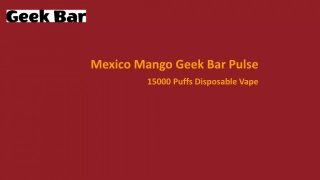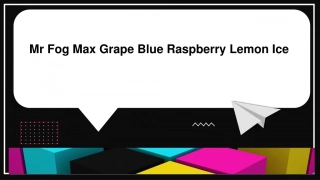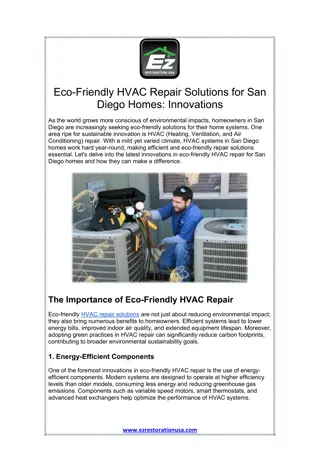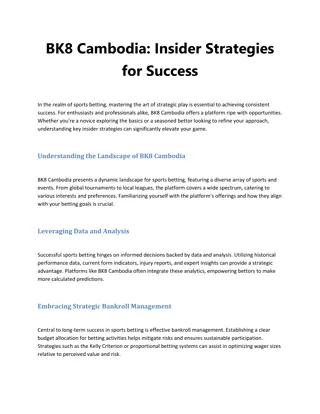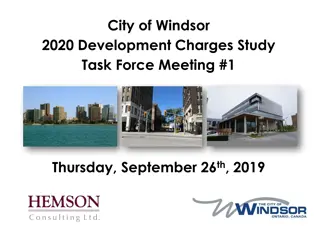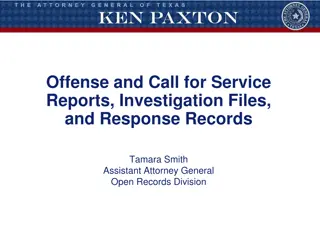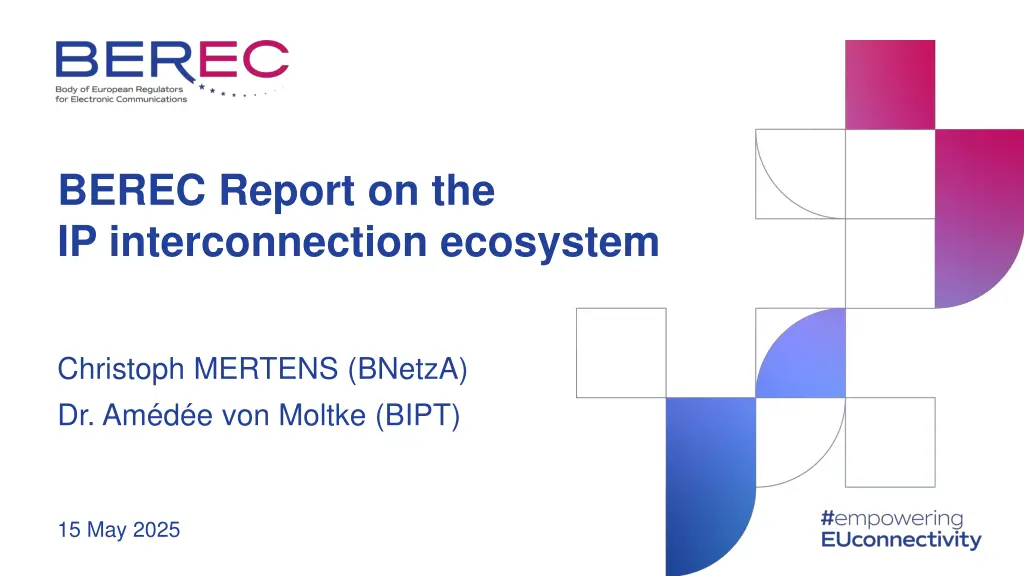
Insights into IP Interconnection Ecosystem: BEREC Report Findings
Discover key findings from the BEREC Report on the IP interconnection ecosystem, including a comprehensive and evidence-based approach, high-level observations, issues assessed such as traffic, pricing, and market developments, and future trends in data traffic and cost dynamics.
Download Presentation

Please find below an Image/Link to download the presentation.
The content on the website is provided AS IS for your information and personal use only. It may not be sold, licensed, or shared on other websites without obtaining consent from the author. If you encounter any issues during the download, it is possible that the publisher has removed the file from their server.
You are allowed to download the files provided on this website for personal or commercial use, subject to the condition that they are used lawfully. All files are the property of their respective owners.
The content on the website is provided AS IS for your information and personal use only. It may not be sold, licensed, or shared on other websites without obtaining consent from the author.
E N D
Presentation Transcript
BEREC Report on the IP interconnection ecosystem Christoph MERTENS (BNetzA) Dr. Am d e von Moltke (BIPT) 15 May 2025
Long history of addressing IP-IC issues BEREC IP-IC reports: 2024, 2017, 2012 BEREC works on charging mechanism BEREC also contributed to the debate on payments from CAPs to telcos 2
Comprehensive / evidence-based approach 12 stakeholder workshops (Sept. Oct. 2023) exhaustive data collection exercise (autumn 2024) ad hoc questionnaire to a broad range of stakeholders for timing reasons not included in the report Public consultation (11. June 1. Aug.) 36 responses: civil society, CAPs, CDN providers, cloud and hosting providers, ISPs, IXPs, academics/experts 3
High-level observations Diverging views: ISPs vs CAPs Report not replicating debate on payments from large CAPs to ISPs IP-IC arguments raised by stakeholders often stem from that debate Focus often large players on both sides but also of relevance for smaller players 4
Issues assessed Traffic developments Pricing / cost developments Market developments Generic structure of IP-IC issues Bargaining situation (CAPs/ISPs) Relationship IP-IC / OIR 5
Traffic developments Data traffic still growing, stabilising after Covid-19 spike Peak-to-average ratio stable 2019-2023 Future: increasing diffusion of UHD video / live streaming On-net CDNs installed in vast majority of IASs networks / more efficient compression techniques Internet managed to coped with traffic growth/peaks Due to competition / technological progress 6
Pricing / cost developments Prices and costs for IP-IC services downward trend continues Traffic growing but cost per GB has fallen faster Technological development (e.g. on-net CDNs) reason why increase in data traffic has not passed through to prices/costs Larger players more successful in reducing costs than smaller players 7
Market developments (i) Large CAPs investments in backbone infrastructure competitive pressure on transit providers Traffic via on-net CDNs increasing, most ISP allow on-net CDNs IAS providers vertically integrated with Tier 1 providers generally use their own transit services. Then, CAPs typically pay for IC 8
Market developments (ii) Substitutability peering / transit Quality: peering rather a substitute to transit than vice-versa Transit as fall-back option: availability/pricing of transit constraining negotiations over the settlement basis of peering agreements Transit less of a substitute to peering if high latency/bandwidth requirements Under certain conditions transit can technically be provided that it may serve as a substitute 9
Generic structure of IP-IC issues (i) Both sides market sides hold each other responsible for causing congestion Generic description: artificial congestion of transit routes Thus: either low quality or (high) fee for premium transit Not only conceivable if ALL routes are congested Workshops showed: most disputes stem from vertically integrated IAS providers attempting to leverage their termination monopoly to introduce (higher) fees for IP-IC directly from CAPs. 10
Generic structure of IP-IC issues (ii) Evidence from the US: ISPs deliberately let IC interfaces congest ISPs accepted short-term costs (more expensive routing) because they expected higher long-term benefits IP-IC ecosystem is driven by functioning market dynamics / cooperation. But: some disputes since 2017 stakeholders: edge cases / not calling for regulation 11
Bargaining situation (CAPs/ISPs) (i) Stakeholder with opposing views: ISPs: CAPs with must-have content, asymmetric regulation CAPs: ISPs with termination monopoly Factors impacting on the relative bargaining situation, e.g. : Degree of substitutability transit/peering Cost structure transit/peering Scales Market/technological developments 12
Bargaining situation (CAPs/ISPs) (ii) Generally, debate largely mostly about large CAPs vs. ISPs - but small CAPs also affected Switching Opposing views on whether end-users switch in case of qualitative issues OFCOM/FCC): switching rates rather low in practice 13
Bargaining situation (CAPs/ISPs) (iii) Number of end-users important for the relative bargaining power of an IAS provider impacts the ability to request termination fees FCC explicitly emphasized this In general, IP-IC bargaining situation balanced Smaller players : typically higher costs thus affecting their bargaining situation 14
Relationship IP-IC / OIR OIR applicable for the part of the internet value chain for which IAS provider is responsible Finding of OIR infringement case-by-case examination (specifically if circumvention through IP-IC) 15
Main findings Findings consistent with previous IP-IC reports IP-IC market driven by competitive market forces without regulatory intervention but few disputes since 2017 No structural problem in peering / transit markets No need for additional regulation the market works IP-IC ostensibly out of OIR scope, but indirectly within 16


